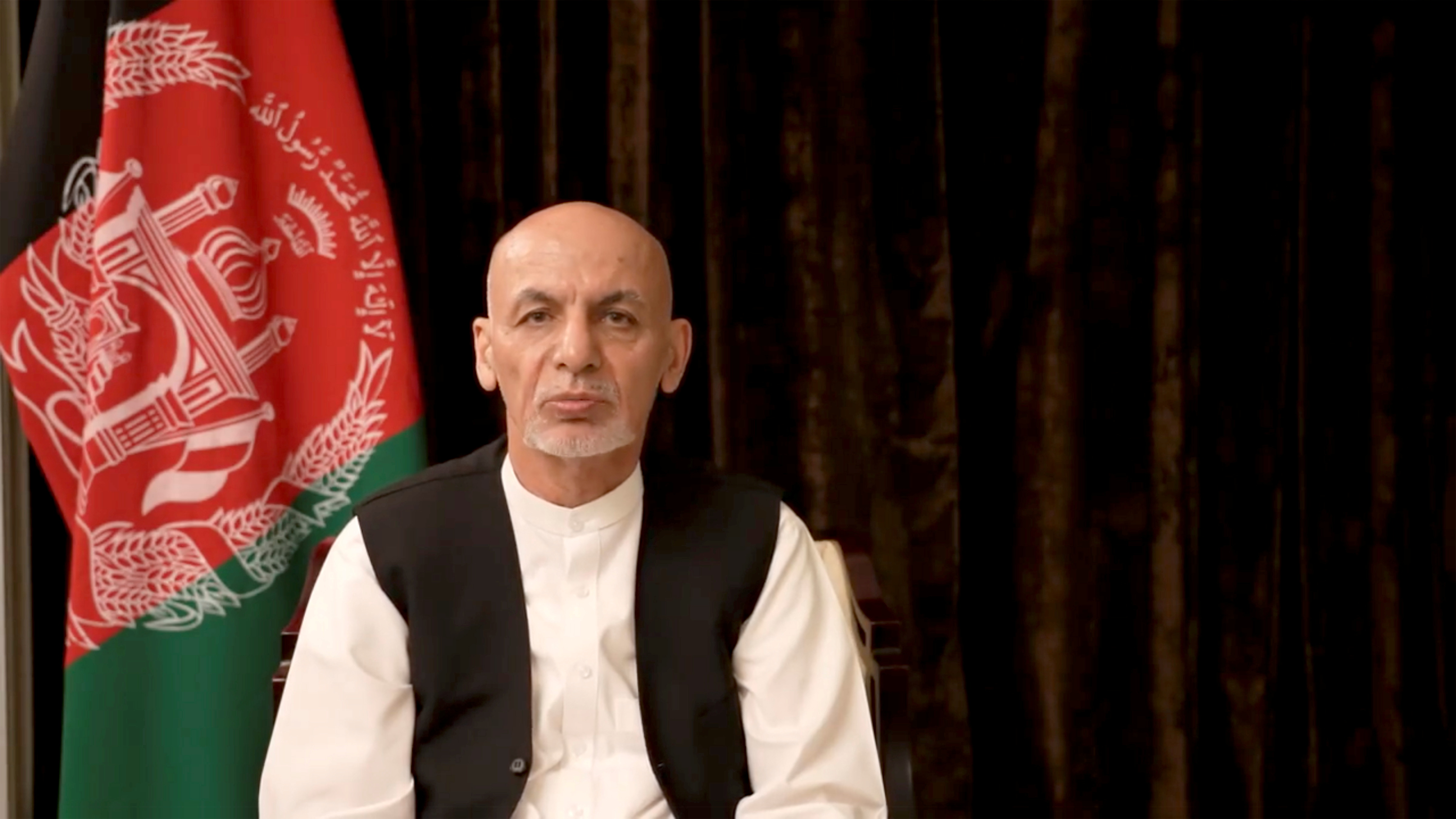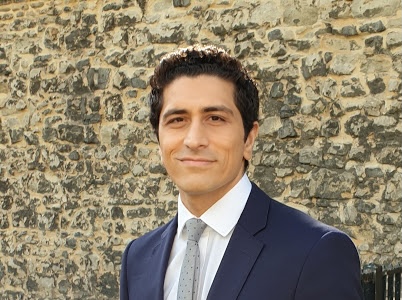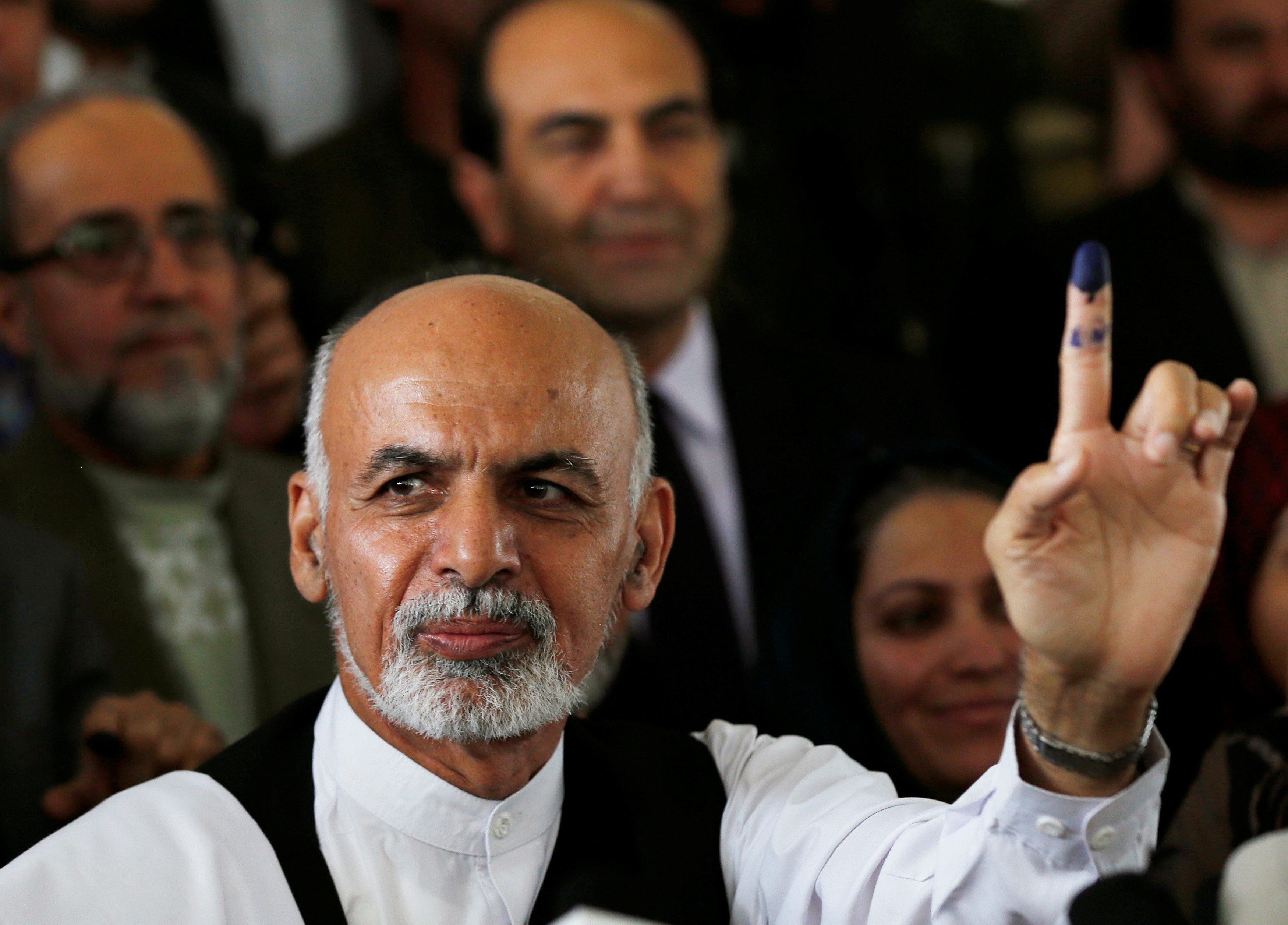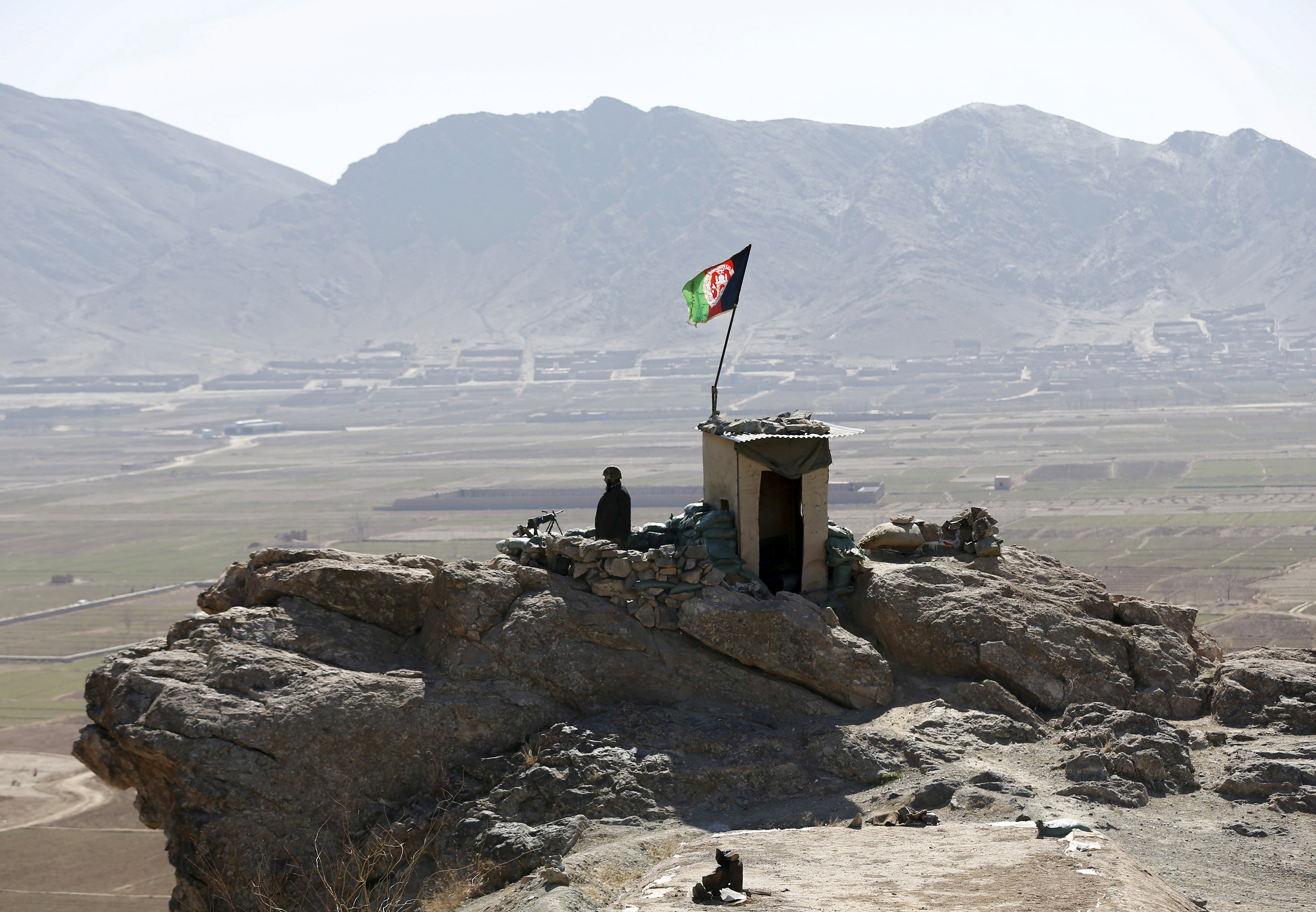
Afghanistan's President Ashraf Ghani made an address from exile in United Arab Emirates, on August 18 2021. /Facebook/Ashraf Ghani/via Reuters
Afghanistan's President Ashraf Ghani made an address from exile in United Arab Emirates, on August 18 2021. /Facebook/Ashraf Ghani/via Reuters
In recent weeks, events in Afghanistan have put the country in the spotlight once again after years of it drifting off the world's news radar.
But for those of us with a personal link to the embattled nation, political instability and devastating war have sadly become all too familiar. The next time you meet an Afghan, ask them if they recall their parents talking about politics and the country's countless conflicts at family gatherings. I'll bet almost all of them do.
READ MORE:
Can we eradicate poverty?
The Taliban is 'the people's choice' claims group
The spoon revolutionizing meals in space
The story of war and migration is one that has touched all Afghans. I was born in London five years after my parents left Afghanistan. It was the Soviet invasion in 1979 that caused the first major exodus from the country in the 1980s. Few could have predicted that 42 years later, people would still be forcibly displaced as a result of violence, which the overwhelming majority has nothing to do with.

Nawied Jabarkhyl was born in London to parents who left Afghanistan in the 1980s. /Phil Caller/CGTN
Nawied Jabarkhyl was born in London to parents who left Afghanistan in the 1980s. /Phil Caller/CGTN
It has been almost 20 years since the U.S.-led invasion toppled the Taliban government, which ruled Afghanistan from 1996 to 2001. What transpired in the following two decades was a failed attempt at state-building, if the ease with which the government and its armed forces collapsed are anything to go by.
Western officials – including U.S. President Joe Biden – have said they were surprised by how quickly the Taliban took over the country. Barely 10 days after taking its first provincial capital, it captured Kabul. But for those of us who've been closely observing events, the structural weaknesses of the Afghan government were plain to see.
There are many factors that have contributed to the collapse of the state but some key dates and issues stand out.
Endemic corruption
Given the nature of its tribal society and its notoriously difficult landscape, the U.S. and its international allies used a collection of warlords in the fight against the Taliban in 2001. These were men who made a name for themselves – not always positively – during the resistance against the Soviets and the ensuing civil war in the early 1990s.
As the western focus shifted to setting up a political structure, many of the leaders were given senior government roles as billions of dollars of aid and military support began trickling in.
The result was a culture of cronyism and endemic corruption that permeated Afghan society and was very often linked to the top.
The United Nations' former deputy special envoy for Afghanistan, Peter Galbraith, told the BBC that coalition partners "never seriously tried to address the corruption that was prevalent from the top."
He added: "The local partner was corrupt, ineffective, illegitimate."
Under the leadership of Hamid Karzai and his successor Ashraf Ghani, Afghanistan constantly ranked among the most corrupt countries in the world. According to Transparency International's Corruption Index, it ranked 165 out of 180 nations in 2020.
To put it into perspective, analysis by Brown University in April estimated the war cost the U.S. alone $2.26 trillion. Many other countries were involved in funding the conflict, aid and reconstruction efforts and pouring billions into the nation.

Afghan presidential candidate Ashraf Ghani Ahmadzai holds up his ink-stained finger after voting in the presidential election in Kabul June 14, 2014. /Reuters/Stringer
Afghan presidential candidate Ashraf Ghani Ahmadzai holds up his ink-stained finger after voting in the presidential election in Kabul June 14, 2014. /Reuters/Stringer
Crisis of governance
The widespread prevalence of corruption did little to endear the government to Afghans. The country's political structure didn't help either.
From the off, the system imposed was a highly centralized state, with the president inheriting significant powers with few checks and balances. On paper, they existed – such as the largely ceremonial parliament – but in practice, the president's signature was sacrosanct.
Hamid Karzai was appointed interim leader in 2002 and won his first election in 2004. Five years later, he was re-elected as president amid reports of widespread electoral fraud.
In 2014, former finance minister Ashraf Ghani was sworn in as his successor, in another disputed election, which was mired in allegations of vote-rigging and ballot boxes being fiddled with.
In both instances, the apparent loser was Abdullah Abdullah, a sharply dressed politician who was a figure of the Northern Alliance resistance to the Soviets and the Taliban.

Former Afghan President Hamid Karzai, second left, accompanied by the old government's main peace envoy, Abdullah Abdullah, recently held talks with members of a Taliban delegation. /Dr Abdullah Abdullah via Facebook/Handout via Reuters.
Former Afghan President Hamid Karzai, second left, accompanied by the old government's main peace envoy, Abdullah Abdullah, recently held talks with members of a Taliban delegation. /Dr Abdullah Abdullah via Facebook/Handout via Reuters.
Both he and Ghani traded accusations of fraud, which led to months of paralysis and a failure to form a new government. U.S. Secretary of State John Kerry had to fly in to mediate and the result was a so-called "National Unity Government."
Ghani would remain president, while a new role of chief executive of Afghanistan was created for Abdullah. The result was a further fracturing of governance and a true turning point for attempts to nation-build. Regardless of its intentions, the move eroded the government's – and particularly Ghani's – legitimacy in the eyes of many Afghans.
The 2019 presidential election involved the same two front-runners. The result was predictably the same – allegations of fraud, months of political crisis, two parallel governments being set up and finally, another power-sharing deal reached almost eight months later in May 2020.
According to the country's Independent Election Commission, voter turnout was less than 20 percent – far lower than the approximately 60 percent recorded in 2004.
Throughout the past two decades, the U.S.-backed government in Kabul has been beset by political problems. Despite the scenes in bustling cities, many Afghans had little day-to-day involvement with state institutions and few viewed the political establishment as working in their favor. That has been a constant theme in the years I have been speaking to people there.
Security weaknesses
"We spent over a trillion dollars. We trained and equipped an Afghan military force of some 300,000 strong," that was what Biden said about the Afghan security forces days after the Taliban's rapid offensive.
In reality, the true number was much smaller. So-called "ghost" soldiers and police officers have been a defining characteristic of the Afghan National Security Forces (ANSF). It's an example of how intertwined the fundamental problems above were. Corruption meant salaries were collected for soldiers who didn't exist and poor governance allowed it to go on.
Despite the eye-watering amounts of money spent on training the ANSF, they have long suffered from structural deficiencies. Aside from being poorly equipped in places, high rates of absenteeism and drug abuse were common, as were concerns of low morale and ethnic divisions being reinforced in the army and police. The issues have been well-documented but rarely made international headlines. Throughout the conflict, there has been a fascination with the numbers trained – i.e. quantitative targets at the direct expense of qualitative progress.

An Afghan National Army (ANA) soldier keeps watch at a checkpost in Logar province, Afghanistan February, 2016. The army had many 'ghost' soldiers. /Reuters/Omar Sobhani
An Afghan National Army (ANA) soldier keeps watch at a checkpost in Logar province, Afghanistan February, 2016. The army had many 'ghost' soldiers. /Reuters/Omar Sobhani
The claim by Biden that Afghan forces lacked "the will to fight" for their country was particularly insulting for many families who sacrificed sons and daughters in the past two decades. Many showed incredible bravery in a battle that lacked purpose for some. It's important to remember that many young Afghans joined the fight because of the lack of alternative employment opportunities.
According to the aforementioned study by Brown University, 241,000 people have died as a direct result of the war. That includes thousands of foreign troops, tens of thousands of militants, Afghan forces and most tragically of all, innocent civilians. The real figures are likely to be higher.
There's a whole host of analysis on the war in Afghanistan swirling around at the moment. The country has made huge progress in the past 20 years in areas such as education, women's rights, healthcare and media freedom – all of which are worth protecting. Identifying why Afghanistan fell to the Taliban so quickly is an incredibly complex task.
But for years, there have been clear signs that this was a deeply fragile nation that, at times, seemed unsure about the course it was on. It lacked the institutions needed to make a modern state healthy and prosperous and the leadership to guide it through its countless challenges. All of that prolonged a devastating war and meant Afghanistan – a country infamously ungovernable and fiercely proud – was ripe for the taking.
Cover picture: Isaiah Campbell/Handout via Reuters

